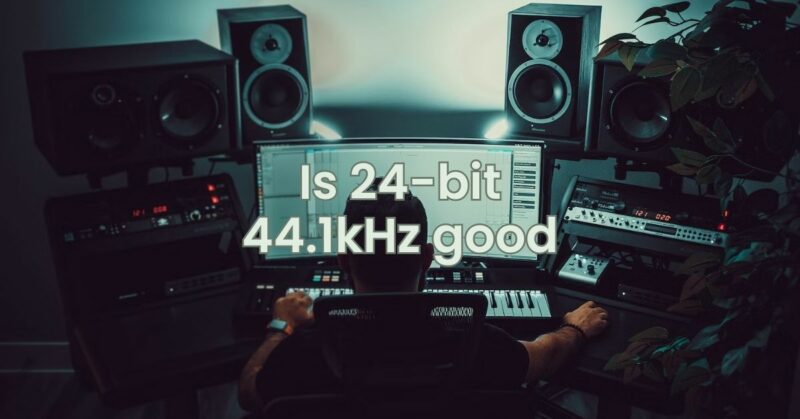In the world of digital audio, the choice of sample rate and bit depth has a significant impact on the overall audio quality. Among the many options available, 24-bit 44.1kHz is a common format used for recording and distributing audio. However, whether this combination is considered “good” depends on various factors and the specific requirements of the audio project. In this article, we will explore the characteristics of 24-bit 44.1kHz audio, its advantages, and when it is a suitable choice for different applications.
Understanding 24-bit 44.1kHz:
1. Bit Depth (24-bit): Bit depth refers to the number of bits used to represent each audio sample in a digital audio file. A higher bit depth provides a greater dynamic range, enabling a more accurate representation of audio volume levels and subtle details in the sound.
In the case of 24-bit audio, each sample is represented by 24 bits, allowing for a dynamic range of approximately 144 dB. This provides a significantly wider range between the softest and loudest sounds, reducing the potential for quantization errors and improving audio fidelity.
2. Sample Rate (44.1kHz): Sample rate represents the number of audio samples taken per second to represent an analog audio signal digitally. The most common sample rates include 44.1kHz, 48kHz, 96kHz, and 192kHz.
44.1kHz is widely used in audio production and distribution, especially in the context of music. It was originally chosen for Compact Disc (CD) audio and has become the standard for digital audio in many applications. It allows for accurate reproduction of frequencies up to approximately 20 kHz, covering the entire audible range of human hearing.
Advantages of 24-bit 44.1kHz:
- High-Quality Audio: 24-bit 44.1kHz audio provides a high level of audio quality, offering a wide dynamic range and preserving delicate nuances in the sound.
- Compatibility: This format is widely supported by various audio devices and software, making it a practical choice for distribution and playback.
- Standard for CDs: 24-bit 44.1kHz is the format used for audio CDs, ensuring that music released in this format can be played on standard CD players.
- File Size: Compared to higher sample rates (e.g., 96kHz or 192kHz), 44.1kHz files are smaller in size, making them more manageable for storage and streaming.
When is 24-bit 44.1kHz Suitable?
24-bit 44.1kHz is a suitable choice in various scenarios, including:
- Music Distribution: When distributing music for CD production or digital platforms, 24-bit 44.1kHz is a common and widely accepted format.
- Compatibility: For general audio applications, 24-bit 44.1kHz ensures compatibility with a broad range of devices and software.
- Musical Recording and Production: 24-bit 44.1kHz provides sufficient quality for most recording and production tasks, capturing the full range of musical frequencies and dynamics.
Considerations for Higher Sample Rates and Bit Depths:
While 24-bit 44.1kHz offers excellent audio quality, some specific applications may benefit from higher sample rates and bit depths. For instance:
- High-Resolution Audio: Audiophiles and audio professionals may prefer higher sample rates (e.g., 96kHz or 192kHz) and bit depths (e.g., 24-bit or 32-bit) for achieving even greater audio accuracy and fidelity.
- Audio Post-Production: In demanding audio post-production tasks, such as sound design for films or video games, higher sample rates and bit depths may be preferred to allow for extensive processing and editing.
Conclusion:
24-bit 44.1kHz is considered a good format for various audio applications, offering high-quality audio and widespread compatibility. It is commonly used for music distribution, recording, and general audio production. While it meets the needs of many scenarios, specific applications may benefit from higher sample rates and bit depths. As always, the choice of audio format should be based on the specific requirements of the project and the desired level of audio quality. With 24-bit 44.1kHz, you can enjoy excellent audio fidelity and a listening experience that faithfully reproduces the richness and nuances of your favorite music and sound content.

